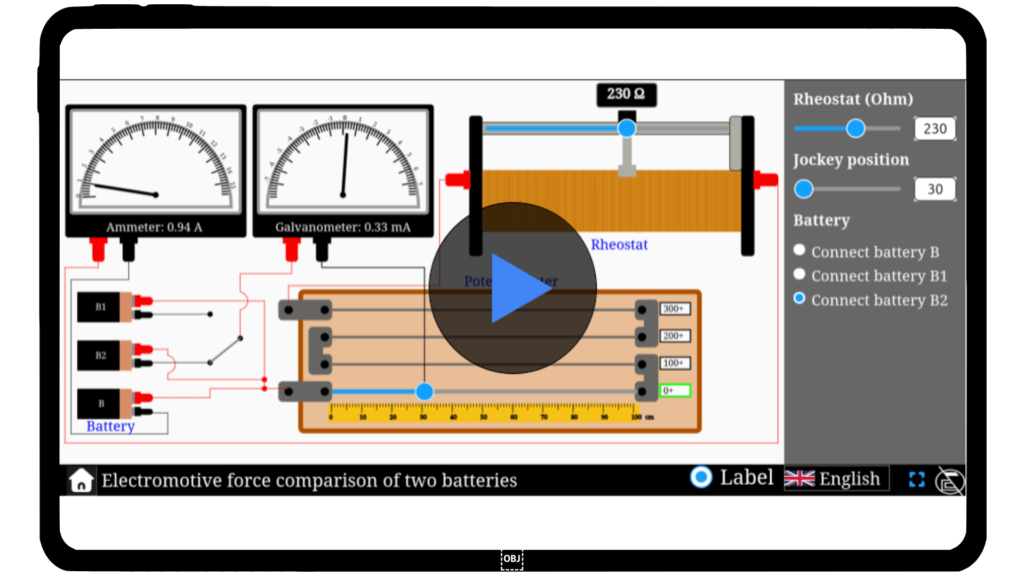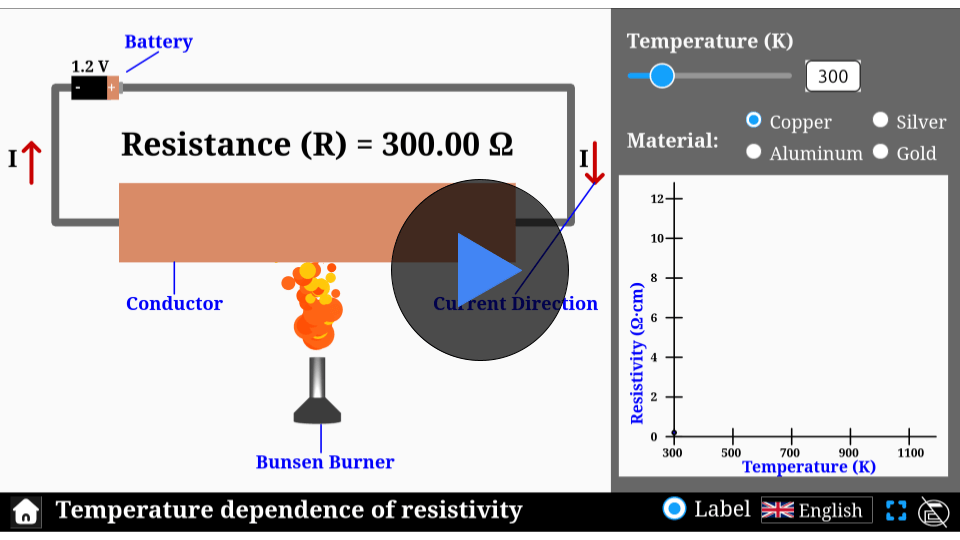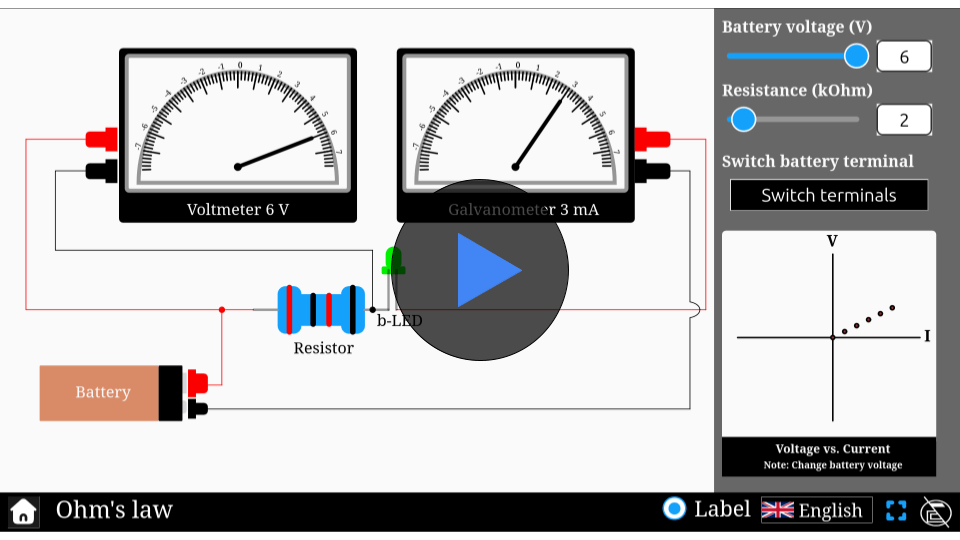Electromotive force comparison of two batteries simulator
Compare the EMFs of two batteries effortlessly with our interactive simulator — dive into the science of electrical potential today!
Electromotive force comparison of two batteries
Electricity drives innovation in every aspect of our lives, from powering gadgets to fueling industries. Curious about how batteries generate electromotive force? Explore our interactive simulator to compare the EMFs of two batteries, adjust connections, and understand the science behind electrical potential. Start experimenting and uncover the secrets of battery power today!
\[
\frac{E_1}{E_2} = \frac{L_1}{L_2}
\]
Mathematical description
where:
- \( E_1 \) is the EMF of first battery
- \( E_2 \) is the EMF of second battery
- \( L_1 \) & \( L_2 \) are the balancing lengths in the potentiometer where the Galvanometer shows no current
Simulator
Compare the EMFs of two batteries effortlessly with our interactive Potentiometer Simulator!
Interactive Physics Simulator – EMF Comparison of Two Batteries
🌟 You May Also Like
Suggested experiments and activities based on your progress...
FAQs on Electromotive Force (EMF) Comparison of Two Batteries
Qus 1. What is electromotive force (EMF)?
EMF is the total energy supplied by a battery per coulomb of charge, measured in volts (V) — it’s the battery’s ability to push current through a circuit.
Qus 2. What is the aim of the EMF comparison experiment?
The aim is to compare the EMFs of two cells using a potentiometer, without drawing current from them.
Qus 3. Which apparatus is used to compare EMF of two batteries?
In the experiment to compare EMF of two cell, a potentiometer, two cells, a galvanometer, a jockey, and a rheostat are used.
Qus 4. How does a potentiometer compare EMF of two cells?
A potentiometer compares EMFs based on the principle that no current flows through the galvanometer at the null point, and \[
\frac{E_1}{E_2} = \frac{L_1}{L_2}
\]
where L is the balancing length.
Qus 5. Why is a potentiometer preferred over a voltmeter?
A potentiometer is more accurate because it draws no current from the cells, whereas a voltmeter slightly loads the circuit.
Qus 6. What does a longer balancing length indicate in this experiment?
A longer length means higher EMF, as voltage is directly proportional to the balancing length.





would love to forever get updated outstanding site! .